How to Choose the Best Fast Charge USB Cable
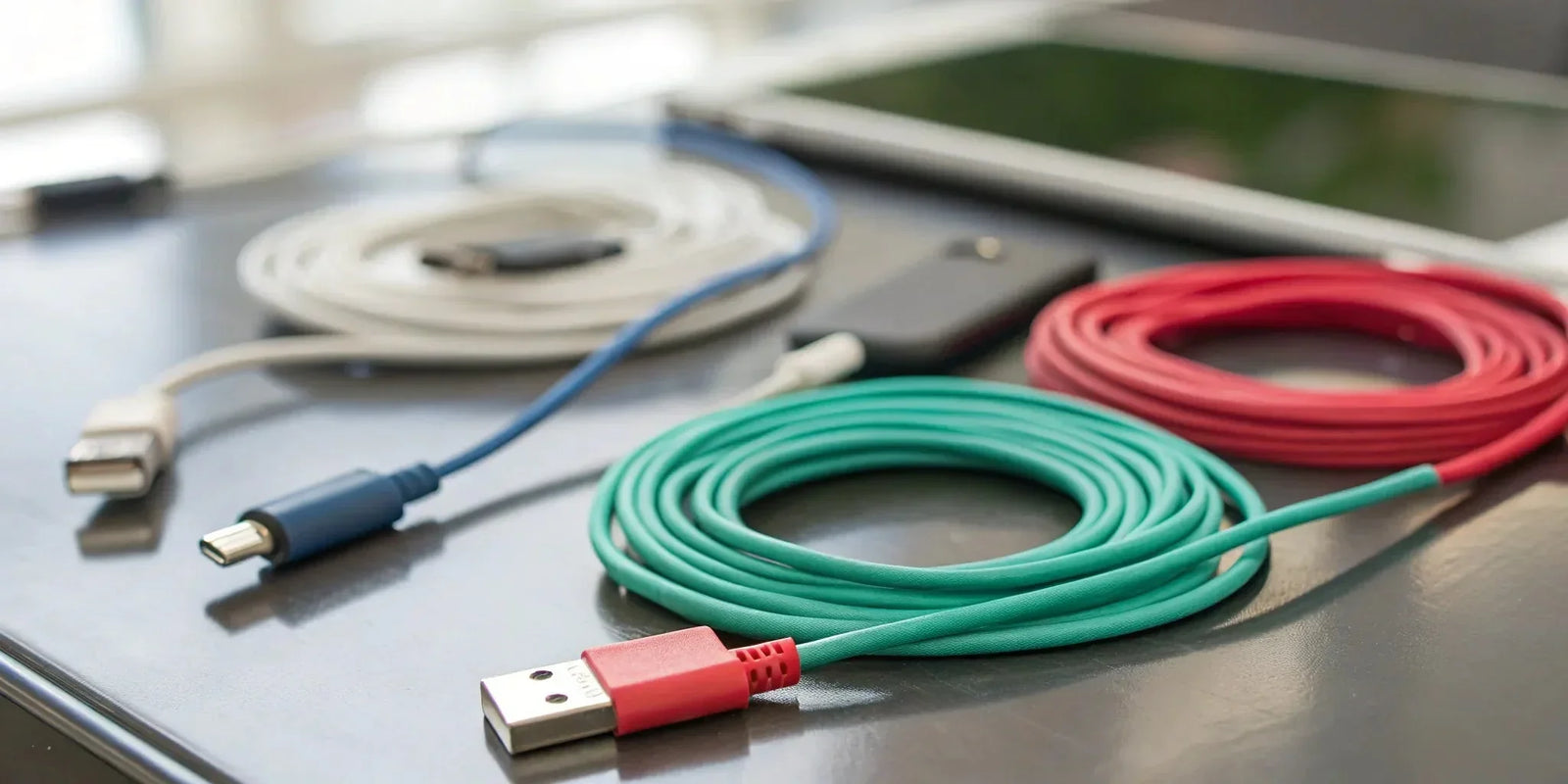
We’ve all felt that flash of panic when our phone battery dips into the red. You grab a cable, plug it in, and… nothing. Or at least, a charge so slow it feels like you’re going backward. The problem often isn’t your phone or the outlet, but the cable itself. A standard cable just can’t handle the power your modern devices need. A high-quality fast charge USB cable, on the other hand, is built for speed and efficiency. But getting that lightning-fast charge isn’t as simple as just buying any cable labeled "fast." It’s a team effort between your cable, your power adapter, and your device. This guide will break down everything you need to know to build the perfect charging setup.

Portable Solar Power Bank 26800mAh - 99Wh Fast Charger
Lithium Polymer (Li-Po) battery. PD fast charging. Holds up to 8 days of reliable power on a single charge. Boasts a charging speed 50% faster than ordinary portable chargers.
Shop NowKey Takeaways
- Check for System-Wide Compatibility: A fast cable is useless without a fast charger and a compatible device. Ensure all three components support the same standard, like USB Power Delivery, to actually get the speeds you're paying for.
- Look Beyond the Price Tag for Quality: A quality cable is an investment in your device's safety. Focus on key features like a durable braided exterior, reinforced stress points, and official safety certifications to avoid damage from overheating.
- Match the Wattage to Your Device: Your charging speed is limited by the lowest-rated component in your setup. To avoid a bottleneck, choose a cable and charger with a wattage that meets or exceeds what your device can handle.
What Is a Fast Charge USB Cable?
A fast charge USB cable is built to handle and deliver more power to your devices, letting them charge much faster than a standard cable. Think of it like the difference between a garden hose and a fire hose—both carry water, but one gets the job done with a lot more speed and force. But it’s not just the cable doing all the work. True fast charging is a team effort between your cable, your power adapter, and your device itself. Let's break down what makes this powerful trio work so well together.
What Actually Makes a Cable "Fast"?
A cable’s speed really comes down to its ability to safely carry more power, which is measured in watts. This is determined by the thickness of the wires inside and the overall quality of its construction. For a cable to be considered "fast," it generally needs to support at least 3 Amps (A) of current. When you pair a high-amperage cable with a high-wattage power adapter, you get that lightning-fast charge. Of course, your phone or tablet also needs to be designed for it. Using a powerful cable with an older device won’t cause any harm, but it won’t speed things up either. The key is to match all three components, which is why a quality cable like the KEUTEK ProSeries is a must-have for any modern setup.
Understanding Power Delivery (PD)
USB Power Delivery, or PD, is the universal standard for fast charging over a USB-C connection. It’s a smart charging technology that lets your device and charger talk to each other to figure out the fastest possible charging speed. Instead of just pushing a fixed amount of power, a PD-enabled charger can adjust the voltage and current to perfectly match what your device needs at any given moment. This not only charges your device incredibly quickly but also does it safely, protecting your battery from overheating. To take full advantage of this, you’ll need a PD-compatible cable and a fast wall charger that supports the standard.
A Quick Guide to Charging Standards
While USB-C Power Delivery is becoming the go-to standard, you might still run into other fast-charging technologies, especially with slightly older devices. The most common one is Qualcomm’s Quick Charge (QC), which has several versions (QC 2.0, 3.0, 4.0, etc.), each offering faster speeds than the last. Other brands, like Samsung, have their own proprietary standards, too. The most important thing to remember is that your device, charger, and cable all need to support the same standard to achieve top speeds. Thankfully, the industry is moving toward USB-C PD as the universal solution, which makes it much easier to find compatible accessories for all your gadgets.
What to Look for in a Quality Fast Charge Cable
When you’re shopping for a new fast charge cable, it’s easy to get overwhelmed by the options. They might all look similar, but the technology inside can vary dramatically. A great cable does more than just power up your device; it does it quickly, safely, and without falling apart after a few months. To find a cable that’s truly worth your money, you need to look past the price tag and focus on four key things: power rating, build quality, data transfer speed, and safety certifications. Getting these right means you’ll have a reliable cable that works perfectly with your gear for years to come.
Match the Power Rating to Your Device
The first step is to make sure your cable can handle the power your device needs. Check the wattage your smartphone, tablet, or laptop requires for fast charging. Then, ensure both your cable and your charger are rated for at least that wattage. Using a cable with a lower rating will result in painfully slow charging speeds. On the flip side, you don't have to worry about using a higher-wattage cable and charger than your device supports—your gadget is smart enough to only draw the power it needs. The goal is to create a charging system where the cable isn't the bottleneck, so pair it with one of the best fast wall chargers to get the job done right.
Prioritize Durable Materials and Build
We’ve all dealt with flimsy cables that fray and break near the connector. A quality cable is an investment in reliability, especially if you’re an adventurer or frequent traveler. Look for features that signal a durable build, like a braided nylon exterior that prevents tangling and fraying. Reinforced stress points where the cable meets the connector head are also a must-have, as this is the most common point of failure. High-quality internal wiring and sturdy connector materials also contribute to a longer lifespan. Investing in well-built ProSeries Max means you won't be hunting for a replacement in a few months.
Check for High-Speed Data Transfer
A great fast charge cable should be a multi-tasker. Beyond just providing power, it should also be able to handle quick file transfers between your devices. This is especially important if you’re moving large photos, videos, or documents from your phone to your laptop. Look for cables that specify their data transfer speeds. Many quality cables, including those from KEUTEK, support speeds up to 480 Mbps, which is the standard for USB 2.0. This ensures you can sync your data and charge your device at the same time without any slowdowns, giving you one less thing to worry about.
Why Safety Certifications Matter
This might be the most important factor of all. Using a cheap, uncertified cable or charger can be risky. A poorly made product can overheat, and using a high-voltage charger on a device that isn't built for it can permanently damage the battery. Look for cables that are USB-IF certified, which means they’ve been tested to meet specific standards for safety and performance. These certifications ensure the cable has the proper internal components to manage heat and regulate voltage, protecting your expensive devices. Whether you're at home or using a fast car charger on the go, certified gear gives you peace of mind.
How to Choose the Perfect Fast Charge Cable
Picking the right fast charge cable feels a lot like choosing the right tool for a job—the best one makes everything work smoothly, while the wrong one can cause a lot of frustration. It’s not just about finding a cable that fits your phone’s port. To get the speed and safety you need, you have to consider power ratings, materials, and even the brand’s reputation. Let’s walk through how to find the perfect cable that will keep your devices powered up and protected.
Find the Right Cable for Your Gadgets
First things first: your cable needs to be compatible with your device’s power requirements. Check the wattage your smartphone, tablet, or laptop can handle. You can usually find this in the device’s manual or with a quick online search. A cable like the KEUTEK ProSeries USB-C can deliver high wattage, but your device ultimately sets the charging speed.
Using a cable and charger with a higher wattage than your device supports won't cause any damage—your phone is smart enough to only draw the power it needs. However, it also won't charge any faster. The key is to ensure your cable and charger can meet or exceed your device's maximum charging speed to get the full benefit of fast charging.
Select the Best Length and Durability
When it comes to cable length, longer isn’t always better. While a 10-foot cable might seem convenient, that extra length can sometimes lead to a slight drop in charging speed due to increased electrical resistance. For the fastest possible charge, stick to shorter cables (around 3-6 feet) when you can.
Durability is just as important. Look for cables made with high-quality materials like braided nylon, which resists tangling and fraying. Reinforced connectors are also a must, as this is the most common point of failure. A well-built cable not only lasts longer but also provides a more stable and secure connection, which is crucial for both charging and data transfer. Investing in a durable cable means you won’t be replacing it every few months.
Common Fast Charging Myths, Busted
There’s a lot of misinformation out there about fast charging. One common myth is that you can use any fast charger with any phone. While modern devices have safety features, using a fast charger with an older phone that isn’t compatible could potentially strain its battery over time. Always check for compatibility.
Another myth is that leaving your phone plugged in will "overcharge" it. Modern smartphones and quality chargers have built-in protections that stop the flow of electricity once the battery is full. You can also forget the old advice about fully draining your battery before recharging. Lithium-ion batteries perform best when kept between 20% and 80% charge.
Balancing Price with Performance
It can be tempting to grab the cheapest cable you can find, but this is one area where you get what you pay for. Poorly made cables often use thin wires and lack essential safety features, which can lead to slow charging, damage to your device’s charging port, or even a fire hazard. Think of a quality cable as an investment in the longevity and safety of your expensive gadgets.
When you choose a reliable brand, you’re paying for better materials, stricter manufacturing standards, and safety certifications. A good cable works with a quality power source like a fast wall charger to deliver a consistent and safe charge every time. Don’t risk a thousand-dollar phone to save a few bucks on a cable.
Our Top Picks for Fast Charge Cables
With so many cables on the market, it can be tough to figure out which ones are actually worth your money. A great cable is an investment in your devices' health and your own peace of mind. To help you cut through the noise, I’ve put together a list of what to look for, from our top recommendation to how other brands stack up. This will give you a clear framework for picking a cable that’s fast, safe, and built to last.
Why We Recommend the KEUTEK ProSeries
When it comes to a cable that ticks all the boxes, the KEUTEK ProSeries is my go-to recommendation. It’s designed for real-world use, which means it’s not just fast—it’s incredibly durable. The braided nylon exterior and reinforced connectors can handle being tossed in a bag or used on the go. What really sets it apart is the magnetic, cross-device compatibility, which makes connecting your gear effortless. It delivers consistent, quick charging without compromising on safety or longevity, making it a solid choice for anyone who depends on their devices day in and day out.
How Premium Brands Compare
Of course, KEUTEK isn't the only name in the premium cable game. Brands like Anker have built a strong reputation for reliability, and for good reason. When you compare top-tier cables, you’ll notice they share a few key traits: high-quality materials, safety certifications, and specs that go beyond basic charging. For example, many premium cables offer significantly faster data transfer speeds, which is a lifesaver for transferring large files. When you’re shopping, it’s helpful to read reviews and see how different brands perform in real-world tests to find the best fit for your specific needs.
Finding Reliable Budget-Friendly Options
It’s tempting to grab the cheapest cable you can find, but that’s often a recipe for disaster. Low-quality cables can be a serious fire hazard—some have been known to smoke and melt when plugged in. A "budget-friendly" cable isn't about the lowest price; it's about the best value. Instead of risking your devices, look for affordable cables from reputable brands that don't skip on safety features. Always check that the cable and your charger have matching wattage ratings. A little bit of research can help you find a safe, reliable cable that doesn't break the bank or your expensive gadgets.
A Side-by-Side Spec Comparison
The market for charging cables is massive and continues to grow as we all demand faster, more efficient power for our devices. With so many options, the best way to make a smart choice is to compare the specs directly. Don’t just look at the price. Check the power output (measured in watts), data transfer speed (Gbps), and the materials used in its construction. A cable that supports 60W or 100W Power Delivery will charge your laptop, while a basic one won't. Understanding these key differences is what separates a smart purchase from a disappointing one.
Why Cable Safety Should Be Your Top Priority
When you’re focused on getting the fastest charge possible, it’s easy to overlook one crucial factor: safety. A charging cable isn't just a simple wire; it's the bridge between a powerful electrical source and your expensive smartphone, tablet, or laptop. Using a poorly made or incompatible cable can do more than just charge your device slowly—it can pose a real risk to your gear and even your home. A quality cable is an investment in protecting your devices from overheating, short-circuiting, and battery damage. Before you plug in, it’s essential to understand what makes a fast charge cable not just quick, but also safe and reliable for everyday use. That's why choosing a cable should be about more than just speed. It's about trusting that the product you're using is engineered to protect your valuable electronics. The right cable works with your charger and device to create a safe ecosystem, ensuring that the high-speed power transfer is managed correctly from the wall outlet all the way to your battery.
Look for Built-in Protection Features
Think of a quality charging setup as a personal bodyguard for your devices. The best charging systems have built-in safeguards to manage the flow of electricity. Look for cables and chargers that specifically mention protection against overcharging, overheating, and excessive current. These features actively monitor the charging process and will cut power if they detect a problem, preventing damage to your device’s sensitive internal components. For example, many modern fast wall chargers include smart technology that communicates with your device to deliver the optimal amount of power without pushing it past its limits. This intelligent power management is key to preserving your battery’s long-term health.
Know the Quality Standards to Trust
It can be tempting to grab the cheapest cable you can find, but those no-name brands often cut corners on safety and materials. A reliable cable is one that’s built to meet recognized quality standards. While certifications can be complex, a good rule of thumb is to stick with reputable brands that have a track record of performance and positive customer reviews. These companies invest in quality control and stand behind their products. An uncertified, poorly made cable might not regulate power correctly, which can lead to inconsistent charging or, in a worst-case scenario, a fried charging port. Investing a little more in a trusted brand gives you peace of mind.
How Good Cables Manage Heat
Fast charging generates heat—it’s a natural byproduct of moving a lot of power quickly. However, a well-designed cable is built to handle and dissipate that heat effectively. This comes down to the quality of the materials, from the internal wiring to the external sheathing. Premium cables, like the KEUTEK ProSeries, use superior conductors and durable insulation that can manage higher temperatures without degrading. When a cable can’t handle the heat, it can become a safety hazard and its internal wires can break down, leading to a loss of performance over time. A cable that stays cool under pressure is a sign of quality engineering.
The Importance of Voltage Control
Proper voltage and amperage control are at the heart of safe charging. Your device is designed to accept power within a specific range. A smart charging system ensures the cable and charger deliver exactly what the device asks for—no more, no less. Using a charger with a lower amperage than your device can handle won't cause harm; it will just charge very slowly. The real risk comes from chargers and cables that can't properly regulate higher voltages. A quality cable facilitates clear communication between the power source and your device, ensuring the voltage is perfectly matched for a fast and safe charge every time.
Get the Most from Your Fast Charging Setup
You’ve invested in a high-quality fast charging cable and adapter—that’s a great first step. But getting the best performance and longest life out of your gear involves more than just plugging it in. A few simple habits can make a huge difference in how quickly your devices power up and how long your accessories last. Think of it as the difference between just owning a great tool and knowing how to use it like a pro. Let’s walk through how to optimize your setup for speed, safety, and durability.
Best Practices for Everyday Charging
To get the fastest charge, you need a complete system that can handle the speed. Your phone, cable, and wall charger all play a part. Check the maximum wattage your device can accept, and make sure your cable and charger are both rated for at least that wattage. Using a higher-wattage charger won't harm your device, but it won't speed things up if your phone can't take in the extra power. For example, pairing a powerful device with one of our ProSeries USB-C cables ensures you’re not creating a bottleneck. Also, try to keep your battery between 20% and 80% constantly charging to 100% or letting it die completely can stress the battery over time.
Simple Tips to Make Your Cables Last
A good cable is an investment, so it’s worth treating it right. The number one rule is to avoid sharp bends, especially near the connectors where the internal wires are most vulnerable. When you unplug your device, pull from the sturdy connector head, not the cord itself. This prevents strain on the delicate connection points. For storage, loosely coil your cable instead of wrapping it tightly around your charger or phone. It’s also wise to avoid buying cheap, uncertified cables. Poorly made cables can not only fail quickly but also pose a risk of overheating and damaging your expensive devices.
Pair Your Cable with the Right Power Adapter
Your fast charging cable is only half of the equation; it needs a powerful partner to deliver those top speeds. You can have the best cable in the world, but if you plug it into a weak, old power brick, you’ll get a slow charge. To truly unlock your cable’s potential, you need a compatible fast charging adapter. When paired with one of our Fast Wall Chargers, a quality cable can take your phone from 0% to 50% in around 20 minutes. The same logic applies when you’re on the move—a standard carport won’t cut it. A dedicated fast car charger ensures your devices are ready to go when you reach your destination.
How to Fix Common Charging Issues
Is your phone charging at a snail’s pace even with your new setup? Don’t panic. First, double-check your power source. If you use a charger with a lower wattage than your device can handle, it will charge very slowly, but it won't cause any harm. Next, inspect the charging port on your device for any lint or debris and gently clean it out with a non-metallic tool like a toothpick. Sometimes, a simple device restart can resolve software glitches affecting charging. And it might sound obvious, but make sure both ends of the cable are securely plugged in. A loose connection is often the culprit behind charging problems.
How to Shop for Cables Like an Expert
Knowing what makes a great fast charging cable is only half the battle. The other half is knowing how to find it without getting ripped off or settling for a dud. A little shopping savvy goes a long way in making sure you get a reliable product that performs as promised and keeps your devices safe. It’s about looking past the flashy marketing and focusing on the details that signal real quality, from where you buy to the fine print on the warranty. Let's walk through a few expert tips to help you make the best choice every time.
Where to Find Authentic Products
It can be tempting to grab the cheapest cable you can find, but this is one area where you really get what you pay for. When you’re shopping, it’s smart to avoid buying cheap fast charge cables from massive, unregulated online marketplaces. These cables often skip crucial safety certifications and are made with subpar materials that can fail, or worse, damage your expensive gadgets. Instead, buy directly from the brand’s official website or from authorized retailers. This guarantees you’re getting an authentic product backed by the manufacturer, not a low-quality knockoff.
Don't Overlook the Warranty
A strong warranty is a clear sign that a company stands behind its products. If a manufacturer is confident that their cable is built to last, they won’t hesitate to offer a solid guarantee. Look for brands that provide at least a one-year warranty, though many premium options offer lifetime warranties. This protects you from manufacturing defects and normal wear and tear, like fraying. Investing in a well-made cable with a good warranty might cost a little more upfront, but it saves you the frustration and expense of replacing flimsy cables every few months.
How to Spot a Counterfeit Cable
Fake cables are everywhere, but you can learn to spot them. First, check the technical specifications. A legitimate fast charging cable will clearly state its capabilities. For example, cables that support 3 Amps (A) or 5 Amps (A) are generally built for fast charging. If the product description is vague or missing key details, that's a red flag. Also, inspect the physical product for signs of poor quality, like flimsy connectors, misspelled logos, or cheap-feeling materials. High-quality options like KEUTEK’s ProSeries USB-C cables always feature robust construction and clear performance specs.
Tips for Comparing Prices
When you compare prices, think about long-term value, not just the initial cost. A $5 cable that you have to replace three times a year is more expensive than a single $20 cable that lasts for years. Look for deals that offer value without sacrificing quality, like multi-packs that give you two durable, fast-charging cables at a better price. Consider the entire package: the cable’s durability, its charging and data transfer speeds, the warranty, and the brand’s reputation. A slightly higher price is often justified by superior performance and the peace of mind that comes with a reliable product.
What's Next for Fast Charging?
Fast charging isn't just a cool feature anymore—it's a must-have. Our lives are tied to our devices, and waiting hours for a battery to fill up just doesn't cut it. The good news is that charging technology is moving just as fast as we are. The world of fast charging is constantly innovating, with smarter standards, more efficient materials, and more powerful delivery systems just around the corner. Let's look at what the future holds and how it will change the way you power up your essential tech.
New Standards on the Horizon
If you're tired of juggling different cables for every device, you're in for a treat. The industry is moving toward universal standards, with USB-C leading the charge. This means more convenience and less clutter in your bag. But it's not just about a single connector type; these new standards are also getting a major power upgrade. The push for better performance is clear when you look at the phone charging cables market, which is expected to grow substantially over the next few years. This signals a future where faster, more efficient, and universally compatible charging is the norm, not the exception. It’s a welcome change that will simplify how we power everything.
The Tech That Will Power Tomorrow's Devices
So, what’s the magic behind these faster charging times? It comes down to smarter technology inside the chargers and cables. Materials like Gallium Nitride (GaN) are a game-changer, allowing manufacturers to create smaller, more powerful chargers that don't overheat. This means you can get a super-fast charge from a block that fits in your pocket. As one industry report notes, the "growing demand for fast charging is expected to boost the market." This consumer demand is pushing companies to innovate with safer, more efficient components. When you're shopping, look for products that use these advanced materials, like KEUTEK's line of fast wall chargers, to ensure you're getting the best performance for your devices.
How Power Delivery Continues to Evolve
USB Power Delivery (PD) is the intelligent technology that lets your devices and chargers talk to each other to determine the fastest, safest charging speed. And it's only getting better. The latest versions of USB PD can handle much higher wattage, meaning you can now use a single, compact charger to power up your phone, tablet, and even your laptop. This evolution is a key reason the US USB charger market is seeing such strong growth. For you, this means more versatility and less gear to carry. A high-quality cable that supports the latest PD standards, like a ProSeries 240W cable, is essential to take full advantage of this powerful technology.
Related Articles
- The Ultimate Fast Charge Cable Buyer's Guide
- C Type USB Cable Fast Charge: A Complete Guide
- Best USB-C Fast Charging Cables: 2023 Guide
- Fast Charger Cables: The Ultimate Guide (2024)
- Fast Charging Cable: Ultimate Speed Guide

Portable Solar Power Bank 26800mAh - 99Wh Fast Charger
Lithium Polymer (Li-Po) battery. PD fast charging. Holds up to 8 days of reliable power on a single charge. Boasts a charging speed 50% faster than ordinary portable chargers.
Shop NowFrequently Asked Questions
Can I use a fast charge cable with my older, non-fast-charging phone? Absolutely. Using a fast charge cable with an older device is perfectly safe. Your phone has built-in technology that controls how much power it draws, so it will only take what it can handle. While the cable won't magically make your old phone charge faster, it's a great way to future-proof your accessories for when you eventually upgrade your device.
Does the length of my charging cable really affect its speed? Yes, it can make a small difference. Longer cables have slightly more electrical resistance, which can lead to a minor drop in charging speed. For the absolute fastest charge, a shorter cable (around 3-6 feet) is ideal. However, for most everyday situations, the convenience of a longer, high-quality cable will far outweigh the tiny decrease in speed.
Will using a fast charger damage my phone's battery over time? This is a common worry, but you can rest easy. Modern smartphones are designed to work with fast charging technology. They have systems that manage the charging speed, slowing it down as the battery gets closer to full to prevent stress and overheating. As long as you use a certified, high-quality cable and charger, fast charging is completely safe for your battery's long-term health.
Do I need different fast charge cables for my phone, tablet, and laptop? Not necessarily, which is great news for decluttering your bag. The key is to choose a cable and charger that can handle the power needs of your most demanding device, which is usually your laptop. A high-wattage USB-C PD cable and charger can power everything from your phone to your laptop, intelligently adjusting the power output for each one.
Is it really worth spending more on a premium cable instead of a cheap one? Think of it as an investment in protecting your expensive devices. Cheaper cables often cut corners on materials and skip essential safety certifications, which can lead to slow charging, frequent breakage, or even damage to your phone's charging port. A premium cable is built with better materials for durability and includes the technology needed to manage heat and voltage safely, giving you a reliable charge for years to come.


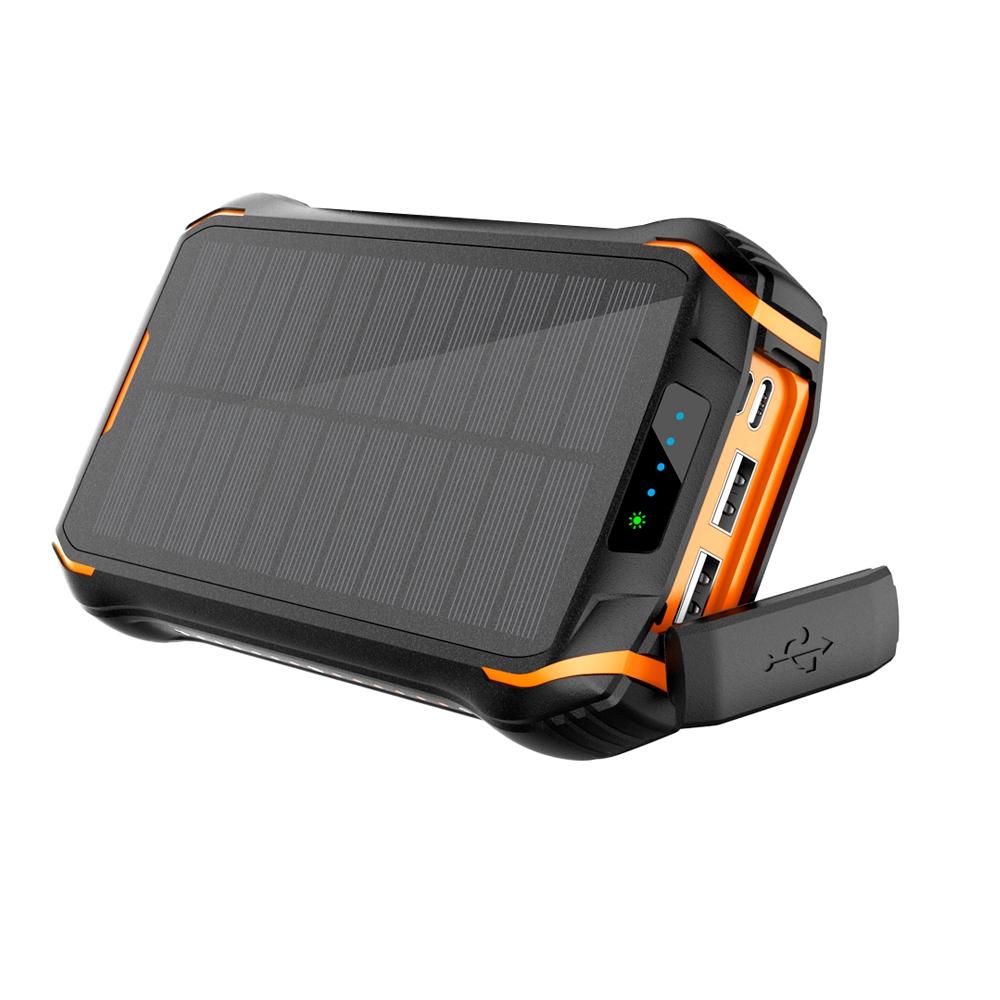
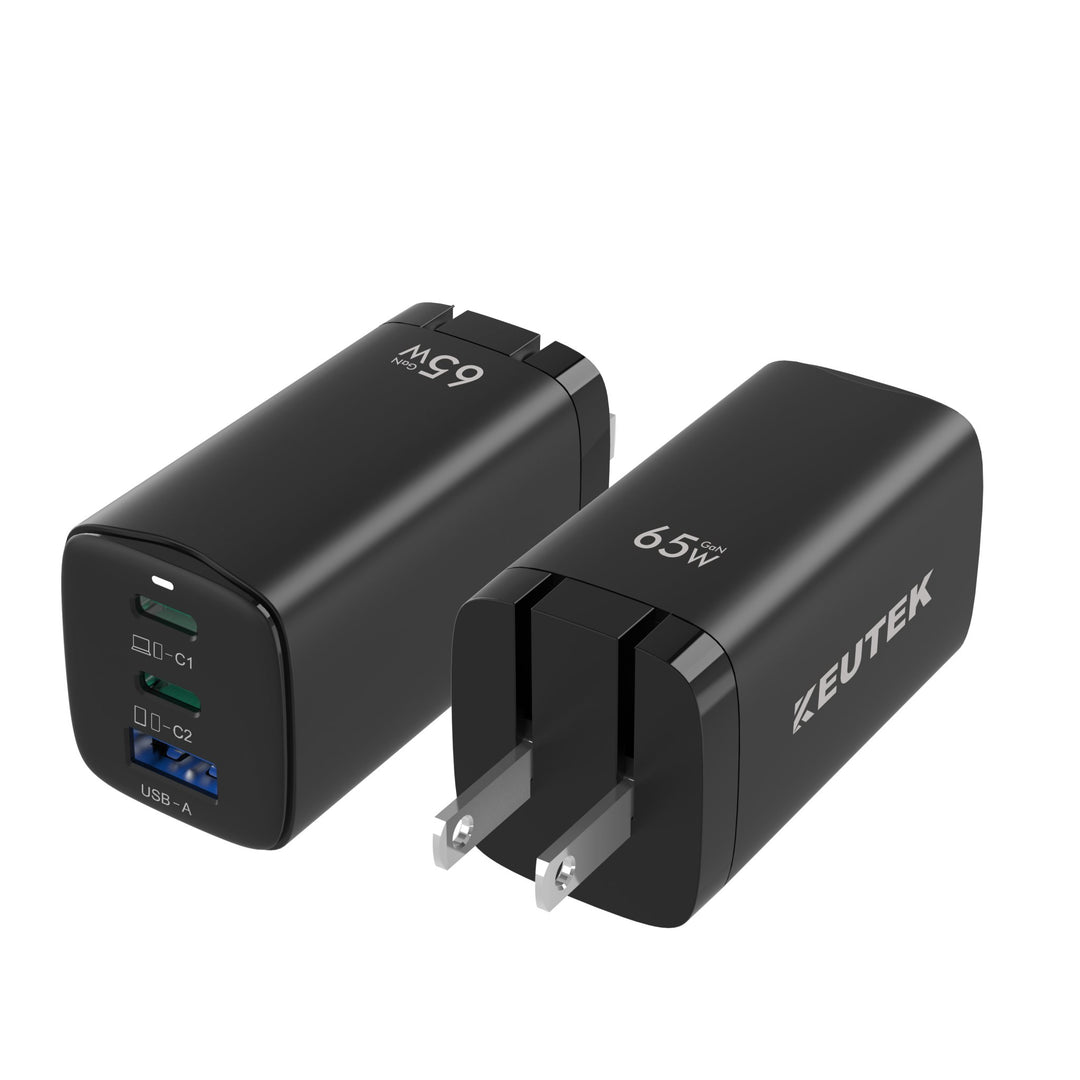
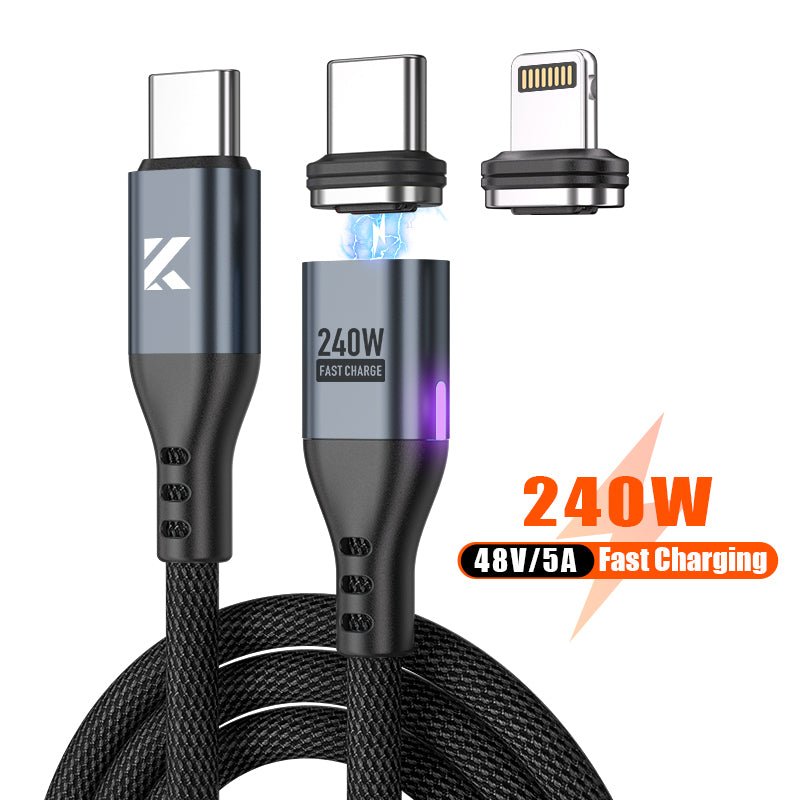
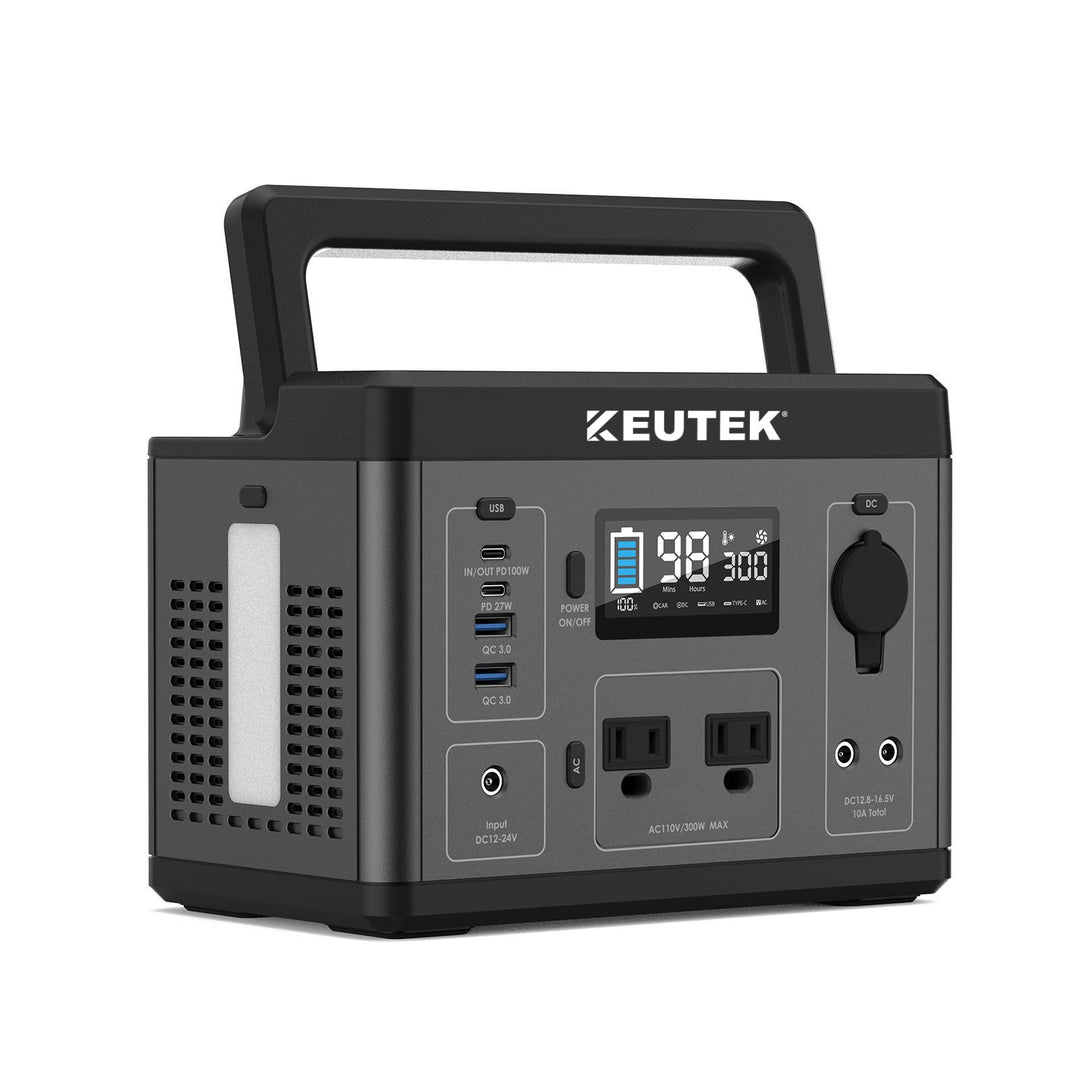
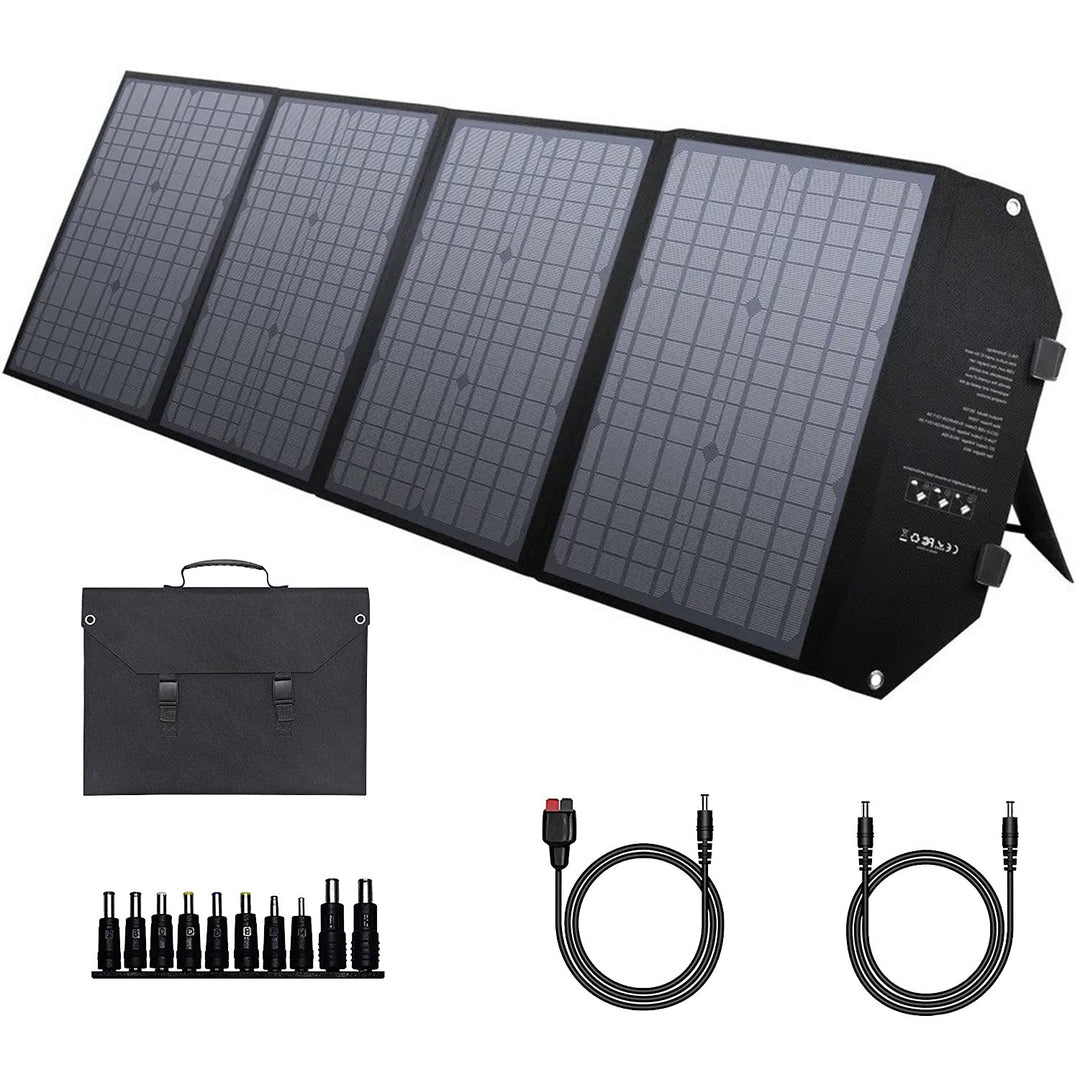
Leave a comment